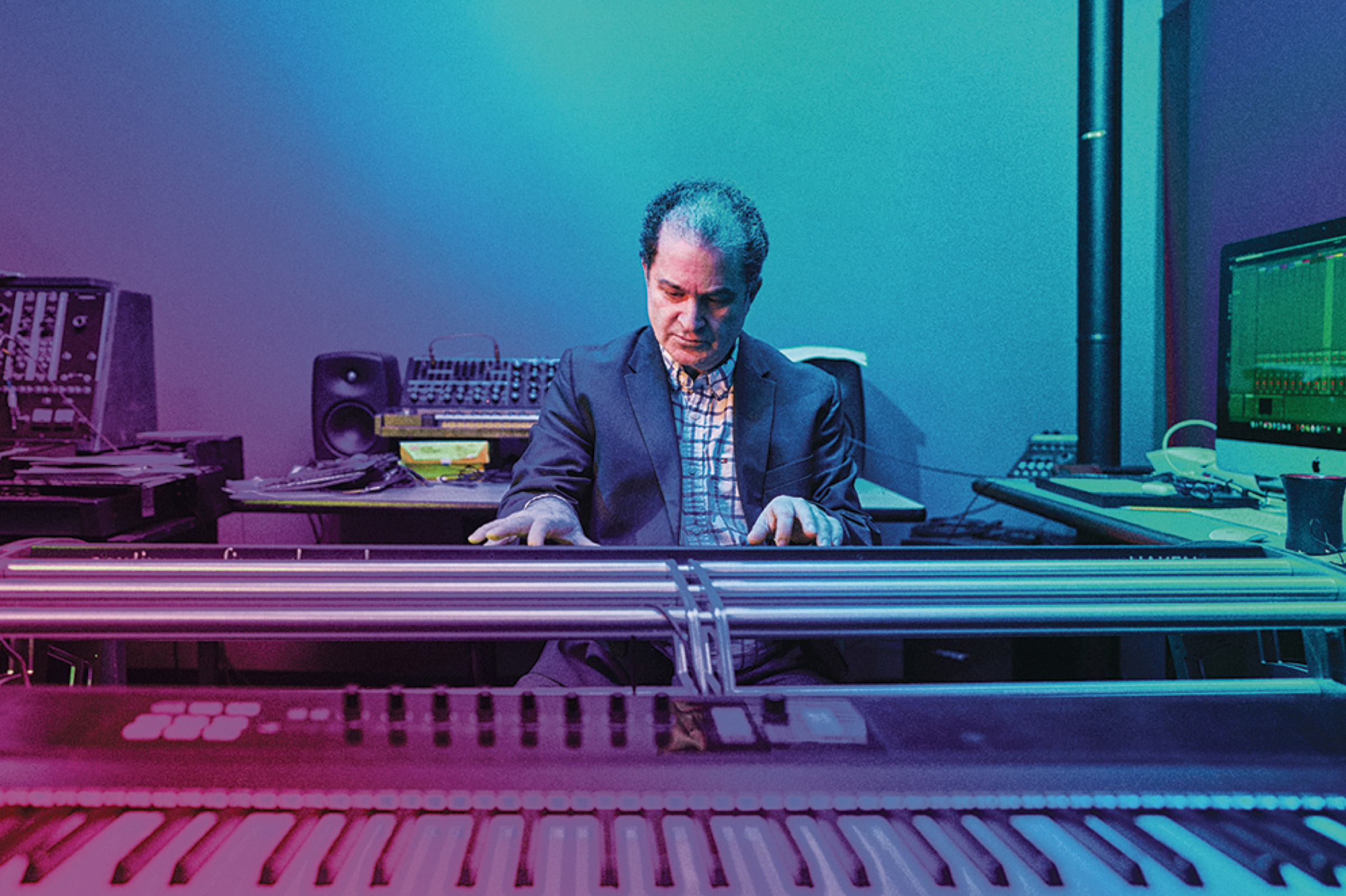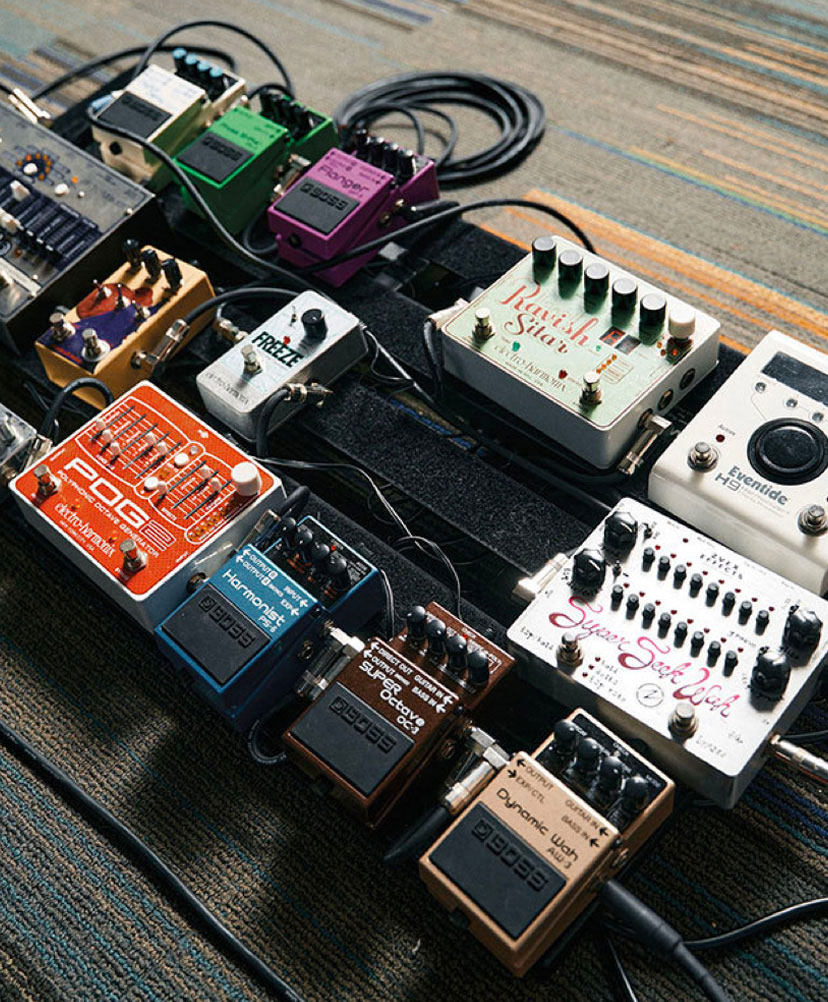
Dan Grabois slides a mute into the mouth of his French horn, cradles it, then blows a sound.
What comes out is a note that sounds like it was played on a guitar.
Grabois, a professor of horn in the Mead Witter School of Music, is sitting in the Electro-Acoustic Research Space (EARS), a studio tucked away on the second floor of the Humanities building. Grabois created the space five years ago, using an innovation grant from the Wisconsin Alumni Research Foundation (WARF) UW2020 Initiative, a funding program designed to “support faculty research that transforms the field.”

In this case, the research is equipment-based, and it is continuing to transform the possibilities of sound and music. Grabois has filtered the sound he created on the horn through a digital audio software platform called Ableton Live. That software allows Grabois and his music students to record and alter sounds in thousands of ways and then mix and multitrack them into something entirely new. The cutting-edge electronic equipment is meant to dare a new generation to exploit music’s limitless potential — to invent, experiment and explore new ways of making sound and art.
The EARS space doubles as both a museum of electronic musical equipment and a paradise for forward-thinking music students. Among the pieces of technology staking out space in the smallish room is a 1970s-era Motorola Scalatron, one of only 17 of the microtonal keyboards ever made. There’s an old-school Moog synthesizer, a theremin and a vocoder (shades of Peter Frampton!). On the modern side, there’s an impressive array of guitar pedals and a continuum fingerboard, a polyphonic synthesizer with a squishy-soft keyboard that creates many of the sounds Grabois incorporates into the music he and his students compose.
“It’s a playground for people to open up their imaginations and start creating stuff,” says Grabois of the space and its equipment.

Grabois first encountered electro-acoustic music as chair of contemporary performance of the Manhattan School of Music in 2007, when he hired a colleague to begin teaching it to his students. He also plays in the New York–based Meridian Arts Ensemble, a brass quintet that tackles multiple genres, including plenty of rock ‘n’ roll.
“Rock ‘n’ roll is largely about dirty, gritty, down-to-earth music,” says Grabois. “And the French horn is largely about choirs of angels singing up above us. I realized that I could use electronic effects to change the sound of the horn.”
Grabois recognized an opportunity to stretch his students’ conception of what constitutes “music.” Before applying for the grant, he called around the country, talking to friends and experts about what should go into a cutting-edge electro-acoustic music lab. Full Compass, a Madison company, was able to supply much of the software and equipment.
“I founded EARS with no trajectory in mind, and I did that purposefully,” says Grabois. “It had an undirected mission, and that’s been great. Students come and borrow equipment because they need a MIDI keyboard for a piece they’re playing or they need a particular distortion sound.”
WARF grants are most often associated with scientific research, making the grant Grabois sought all the more interesting. EARS brings UW-Madison into the company of other major universities that offer training in electro-acoustic music.
“We should really be exploring the edge of contemporary music,” says Grabois.
We should really be exploring the edge of contemporary music
Over its five-year lifespan, EARS has attracted music students who spent time DJ’ing in high school and messed around with composing electronica. They are already familiar with Ableton Live and ready to push the equipment in directions Grabois hadn’t even considered. Throughout the pandemic, EARS has been a refuge for students looking to create multitrack compositions, either in groups or on their own.
“They can’t believe that this resource is here,” he says.
Grabois is also using EARS to realize his own musical vision. He’s almost halfway through a cycle of four recordings, the first of which, Air Names, uses the EARS equipment to feature his horn work in songs with a Middle Eastern vibe, as well as rock-influenced tunes. The second disc, Fire Names, releases soon, and Grabois plans to record the third this summer, featuring contemporary music for horn and piano.
“I feel like I have not begun to even scratch the surface of what can be created in the space as it stands now,” says Grabois.




